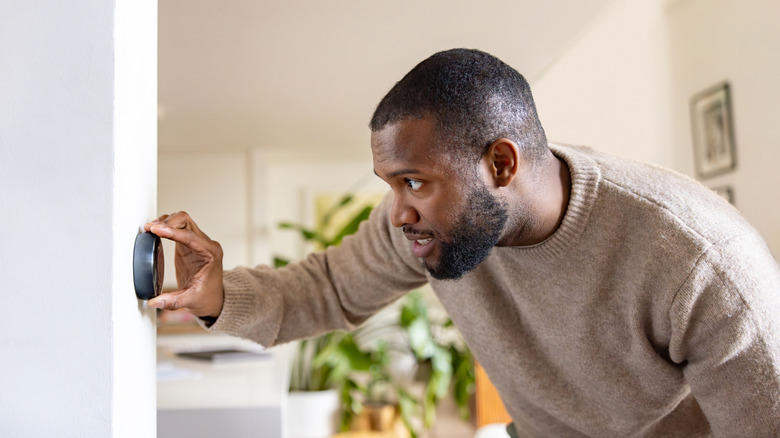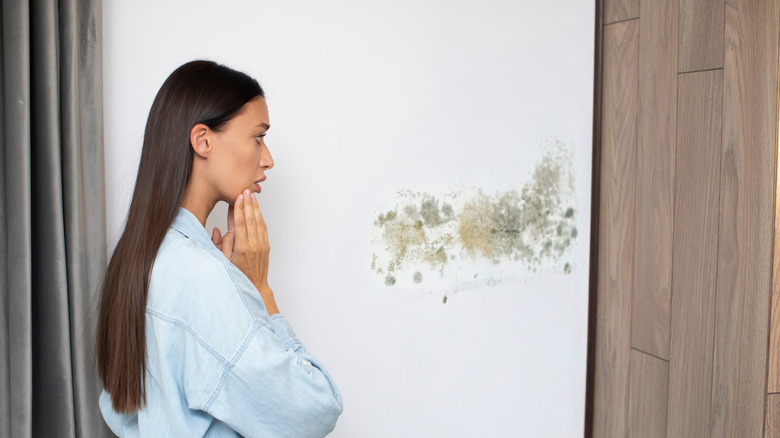Keeping Your Home Too Warm Could Cause A Major Unwanted Problem
Summer temperatures (or year-round warm temperatures in some states like Florida) can, unsurprisingly, cause the inside of your home to be warm and uncomfortable. According to Carrier, the recommended summer temperature for your home is 78 degrees Fahrenheit, with the air conditioning kicking on when it exceeds this temperature. This is the recommended at-home temperature; when away from the house, it's recommended to raise the temperature to an even warmer 86 degrees. While this may seem like tropical temperatures to some, many homeowners stick to this schedule to reduce energy costs. However, keeping your home too warm might cause a major unwanted (and unsafe) problem: mold growth.
Keeping your home excessively warm can actually increase the indoor humidity to levels that promote rapid mold and mildew growth, leading to potential property damage and health risks like respiratory issues and weakened immune systems. Since there are many unexpected places where mold may be lurking in your home, retaining extra moisture will only make any existing problem worse. Not only are these significant problems on their own, but most homeowners' insurance policies won't cover the cost of mold remediation unless it's under a covered scenario (which this is not). This means that hot temps can cause you mold problems, but it'll cost you even more for your wallet.
How to avoid mold problems in your home
As a general rule of thumb, it's best to keep your home's relative humidity between 30% and 50%. Any lower than 30% and you'll likely face dry skin, chapped lips, and even irritated noses. It can even cause damage to your home, like warped wood floors, if left too low for too long. A relative humidity of over 50% can lead to both mold growth and other unrelated health problems, like dehydration. It can also lead to rotting doors and furniture, and even damage to electronics.
To help avoid mold problems in your home when it's hot, you have a few options. First, you can set the thermostat to an overall lower temperature to force the air conditioning to kick on sooner. This will allow the air conditioner to run longer cycles, therefore reducing the relative humidity in your home. Regardless of whether you adjust the thermostat, you can invest in a dehumidifier. These essentially pull the moisture out of the air and collect it as water in a reservoir that you can easily dump out. They come in various price points so that you can choose the right size dehumidifier for your space. This helpful device allows you to set the desired humidity level for your room, and it will automatically maintain it by cycling on and off as needed. There are some surefire signs you should run a dehumidifier in your house, like having a stale odor, that are often accompanied by visible signs of mold growth on walls or ceilings. It's best to fix the minor problems before they gets out of hand (and expensive).

